Turing Custom: A Quick Look At Upcoming GeForce RTX 2080 Ti & 2080 Cards
by Anton Shilov on August 23, 2018 4:45 PM EST
Following NVIDIA’s announcement of its latest GeForce RTX 20-series GPUs on Monday, its board partners also introduced their custom-built offerings based on the new processors. As is usually the case, the first wave of products do not feature extreme frequencies or highly-custom designs – and indeed many of them look like they'll be using NVIDIA's reference PCB – but they still offer various customizations and cooling changes relative to NVIDA's own "reference" Founders Ediiton card. Today we are taking a look on these cards and briefly compare their characteristics.
NVIDIA’s GeForce RTX 20-series lineup will initially consist of three models: the RTX 2080 Ti based on the TU102 GPU as well as the RTX 2070 and the RTX 2080 powered by the TU104 processor. The flagship GeForce RTX 2080 Ti GPU features 4352 CUDA cores, a 352-bit memory bus, and carries 11 GB of GDDR6 memory. Meanwhile, the GeForce RTX 2070 and 2080 boards have 2304 and 2944 cores (respectively), a 256-bit memory bus, and carry 8 GB of GDDR6.
Makers of graphics cards cannot activate any additional CUDA cores, but what they can do is increase default and boost frequencies of GPUs, or install high-performance cooling systems, thus altering and improving performance of their products compared to reference video cards designed by NVIDIA. Without further ado, let’s jump right to custom-designed graphics cards based on the TU102 and TU104 GPUs.
Custom GeForce RTX 2080 Ti Graphics Cards
NVIDIA’s reference PCB for the GeForce RTX 2080 Ti, which is being used in their own factory overclocked Founders Edition card, feature a 13-phase VRM and a double-wide dual-fan cooler. The chip developer's Founder’s Edition will ship with the GPU clocked at 1350/1635 MHz (base/boost), but for its partners NVIDIA recommends maximum burst frequency of up to 1545 MHz. In a bid to differentiate themselves from NVIDIA's own design (while ideally fetching a similar price), they'll be implementing their own factory overclocks along with different (and usually larger) coolers..
When it comes to power delivery, only EVGA has confirmed that its TU102-based GeForce RTX 2080 Ti FTW3 and GeForce RTX 2080 Ti FTW3 Ultra cards will feature a custom PCB, in this case implementing a 19-phase (16+3?) VRM. And while it is logical to expect at least some board partners to also do the same, for the moment only EVGA is claiming to do so. For more details, please see comparison of the cards in a table below.
Moving on to cooling systems. ASUS, Colorful, EVGA, Palit, and ZOTAC all plan to offer triple-wide GeForce RTX 2080 Ti graphics cards with massive heatsinks and three cooling fans. Meaning all of these designs should offer very high cooling potentials. In the meantime, Colorful, GIGABYTE, Inno3D, KFA2/Galax, MSI, and PNY will offer slimmer RTX 2080 Ti products with similar triple fan coolers, which typically means good performance amid moderate noise levels.
So far, only Inno3D and MSI have announced a GeForce RTX 2080 Ti board with a hybrid cooler, but expect makers of custom liquid cooling systems to offer specialized waterblocks for cards made by various AIB producers.
It is important that all manufacturers of graphics cards plan to offer ‘inexpensive’ versions of their GeForce RTX 2080 Ti products, often with simple blower cooling systems. Ideally these products will hit the streets at NVIDIA's official MSRPs, however given early demand the fact that launch cards frequently sell out, we're not seriously expecting to see cards at MSRP in September.
Speaking of clocks, it is noteworthy that all of the AIB makers that have disclosed base and boost frequencies of their GeForce RTX 2080 Ti cards decided to stick to clocks of Founder’s Edition cards. It is unclear whether this is a precaution on board partners' part, or a requirement of NVIDIA. However, if all AIB producers stick to this strategy, at least initially there will be no custom adapters that will offer higher performance than NVIDIA’s FE boards.
| Custom Graphics Cards Based on NVIDIA GeForce RTX 2080 TI GPU | |||||||
| Maker | Model | GPU Clocks Base Boost |
Type of Cooler # of Fans |
Width | Display Outputs |
||
| ASUS | ROG Strix RTX2080TI-O11G-GAMING | 1350 MHz ? MHz |
Regular Three Fans w/ 0db Fan Mode |
2.7-Wide | 2×DP 1.4 2×HDMI 2.0b USB Type-C |
||
| ROG Strix TX2080TI-A11G-GAMING | |||||||
| ROG Strix RTX2080TI-11G-GAMING | |||||||
| Dual-RTX2080TI-O11G | Regular Two Fans w/ 0db Fan Mode |
3×DP 1.4 1×HDMI 2.0b USB Type-C |
|||||
| Dual-RTX2080TI-A11G | |||||||
| Dual-RTX2080TI-11G | |||||||
| Turbo-RTX2080TI-11G | Blower One Fan |
2-Wide | 2×DP 1.4 1×HDMI 2.0b USB Type-C |
||||
| Colorful | iGame GeForce RTX 2080 Ti Advanced OC | 1350 MHz 1635 MHz |
Regular Three Fans |
2.5-Wide | 3×DP 1.4 1×HDMI 2.0b USB Type-C |
||
| iGame GeForce RTX 2080 Ti Advanced | 1350 MHz 1545 MHz |
||||||
| EVGA | GeForce RTX 2080 Ti FTW3 ULTRA | 1350 MHz ? MHz |
Regular Three Fans ICX2 |
2.75-Wide | 3×DP 1.4 1×HDMI 2.0b USB Type-C |
||
| GeForce RTX 2080 Ti FTW3 | |||||||
| GeForce RTX 2080 Ti XC2 ULTRA | Regular Two Fans ICX2 |
||||||
| GeForce RTX 2080 Ti XC2 | |||||||
| GeForce RTX 2080 Ti XC ULTRA | Regular Two Fans |
||||||
| GeForce RTX 2080 Ti XC | 2-Wide | ||||||
| GeForce RTX 2080 Ti Black | |||||||
| GeForce RTX 2080 Ti | Blower One Fan |
||||||
| GIGABYTE | GeForce RTX 2080 Ti Gaming OC 11G GV-N208TGAMING OC-11GC |
1350 MHz ? MHz |
Regular Three Fans |
2-Wide | 3×DP 1.4 1×HDMI 2.0b USB Type-C |
||
| GeForce RTX 2080 Ti Windforce OC 11G GV-N208TWF3OC-11GC |
|||||||
| Inno3D | IChiLL GeForce RTX 2080 Ti Black | 1350 MHz ? MHz |
Hybrid | 2-Wide | 3×DP 1.4 1×HDMI 2.0b USB Type-C |
||
| GeForce RTX 2080 Ti Gaming OC X3 | Regular Three Fans |
||||||
| GeForce RTX 2080 Ti X2 OC | Regular Two Fans |
||||||
| KFA2 Galax |
GeForce RTX 2080Ti SG Edition | 1350 MHz ? MHz |
Regular Three Fans |
2-Wide | 3×DP 1.4 1×HDMI 2.0b USB Type-C |
||
| GeForce RTX 2080Ti OC White | Regular Two Fans |
||||||
|
|
|||||||
| GeForce RTX 2080Ti | Blower One Fan |
||||||
| MSI | Gaming X Trio | 1350 MHz ? MHz |
Regular Three Fans |
? | ? | ||
| Duke | ? | ? | |||||
| Ventus | Regular Two Fans |
2-Wide | ? | ||||
| Aero | Blower One Fan |
? | |||||
| Sea Hawk | Hybrid Blower Two Fans |
? | |||||
| Palit | GeForce RTX 2080 Ti GamingPro OC | 1350 MHz 1650 MHz |
Regular Two Fans |
3-Wide | 3×DP 1.4 1×HDMI 2.0b USB Type-C |
||
| GeForce RTX 2080 Ti GamingPro | 1350 MHz 1545 MHz |
||||||
| PNY | GeForce RTX 2080 Ti XLR8 Gaming Overclocked Edition | 1350 MHz 1545 MHz |
Regular Three Fans |
2-Wide | 3×DP 1.4 1×HDMI 2.0b USB Type-C ? |
||
| GeForce RTX 2080 Ti Blower | Blower One Fan |
||||||
| ZOTAC | GAMING GeForce RTX 2080 Ti AMP ZT-T20810D-10P |
1350 MHz ? MHz |
Regular Three Fans |
2.5-Wide |
3×DP 1.4 1×HDMI 2.0b USB Type-C |
||
| GAMING GeForce RTX 2080 Ti Triple Fan ZT-T20810F-10P |
1350 MHz 1545 MHz |
||||||
| NVIDIA | Founder's Edition | 1350 MHz 1635 MHz |
Regular Two Fans |
2-Wide | 3×DP 1.4 1×HDMI 2.0b USB Type-C |
||
| Reference | 1350 MHz 1545 MHz |
||||||
Custom GeForce RTX 2080 Graphics Cards
Next up are graphics cards based on NVIDIA’s TU104 GPUs — the GeForce RTX 2070 and the GeForce RTX 2080. With the 2080 shipping on September 20th, all of NVIDIA’s allies have introduced their RTX 2080 boards. By comparison, only a handful of designs for the 2070, which ships in October, have been shown off. So we likely won't see the bulk of those until much closer to when they ship.
NVIDIA’s GeForce RTX 2080 Founder’s Edition cards are outfitted with a 10-phase VRM and are clocked at 1515/1800 MHz (base/boost). In fact, NVIDIA’s own RTX 2070 cards also use the same power delivery circuity, so it looks like the GPU designer is fond of that VRM configuration for its TU104 chip.
Again, so far only EVGA has announced two GeForce RTX 2080 graphics cards featuring a 14-phase VRM. Other makers may also offer cards with an enhanced VRM setup, but they remain quiet about this fact right now.
As for massive cooling systems, ASUS, Colorful, EVGA, and Palit intend to offer triple-wide GeForce RTX 2080s with three fans. And Colorful, GIGABYTE, Inno3D, KFA2/Galax, MSI, PNY, and ZOTAC will offer more traditional two-wide 2080s with triple-fan coolers.
MSI plans to release an RTX 2080 card with hybrid cooling, but expect makers of high-end LCS to launch waterblocks for the latest graphics cards too.
Meanwhile, for those who prefer cheaper boards, AIB makers will offer GeForce RTX 2070/2080 products with blower coolers.
When it comes to clocks of custom GeForce RTX 2080 graphics adapters, the situation is identical to the 2080 Ti. None of the board partners have announced cards with any kind of base clock overclock, and meanwhile no one is offering an overclocked boost clock higher than NVIDIA's own Founders Edition cards.
| Custom Graphics Cards Based on NVIDIA GeForce RTX 2080/2070 GPU | |||||||
| Maker | Model | GPU Clocks Base Boost |
Type of Cooler # of Fans |
Width | Display Outputs |
||
| ASUS | ROG Strix RTX2080-O8G-GAMING | 1515 MHz ? MHz |
Regular Three Fans w/ 0db Fan Mode |
2.7-Wide | 2×DP 1.4 2×HDMI 2.0b USB Type-C |
||
| ROG Strix RTX2080- A8G-GAMING | |||||||
| ROG Strix RTX2080-8G-GAMING | |||||||
| Dual RTX2080-O8G | Regular Two Fans w/ 0db Fan Mode |
3×DP 1.4 1×HDMI 2.0b USB Type-C |
|||||
| Dual RTX2080-A8G | |||||||
| Dual RTX2080-8G | |||||||
| Turbo RTX2080-8G | Blower One Fan |
2-Wide | 2×DP 1.4 1×HDMI 2.0b USB Type-C |
||||
| Colorful | iGame GeForce RTX 2080 Advanced OC | 1515 MHz 1800 MHz |
Regular Three Fans |
2.5-Wide | 3×DP 1.4 1×HDMI 2.0b USB Type-C |
||
| iGame GeForce RTX 2080 Advanced | 1515 MHz 1710 MHz |
||||||
| EVGA | GeForce RTX 2080 FTW3 ULTRA | 1515 MHz ? MHz |
Regular Three Fans ICX2 |
2.75-Wide | 3×DP 1.4 1×HDMI 2.0b USB Type-C |
||
| GeForce RTX 2080 FTW3 | |||||||
| GeForce RTX 2080 XC2 ULTRA | Regular Two Fans ICX2 |
||||||
| GeForce RTX 2080 XC2 | |||||||
| GeForce RTX 2080 XC ULTRA | Regular Two Fans |
||||||
| GeForce RTX 2080 XC | 2-Wide | ||||||
| GeForce RTX 2080 Black | |||||||
| GeForce RTX 2080 | Blower | ||||||
| GIGABYTE | GeForce RTX 2080 Gaming OC 8G GV-N2080GAMING OC-8GC |
1515 MHz ? MHz |
Regular Three Fans |
2-Wide | 3×DP 1.4 1×HDMI 2.0b USB Type-C |
||
| GeForce RTX 2080 Windforce OC 8G GV-N2080WF3OC-8GC |
|||||||
| GeForce RTX 2070 GAMING OC 8G | 1410 MHz ? MHz |
||||||
| Inno3D | GeForce RTX 2080 Gaming OC X3 | 1515 MHz ? MHz |
Regular Three Fans |
2-Wide | 3×DP 1.4 1×HDMI 2.0b USB Type-C |
||
| GeForce RTX 2080 X2 OC | Regular Two Fans |
||||||
| GeForce RTX 2080 Jet | Blower | ||||||
| KFA2 Galax |
GeForce RTX 2080 OC White | 1515 MHz ? MHz |
Regular Two Fans |
2-Wide | 3×DP 1.4 1×HDMI 2.0b USB Type-C |
||
| GeForce RTX 2080 OC | |||||||
| GeForce RTX 2080 | |||||||
| MSI | Gaming X Trio | 1515 MHz ? MHz |
Regular Three Fans |
? | ? | ||
| Duke | ? | ? | |||||
| Ventus | Regular Two Fans |
2-Wide | ? | ||||
| Aero | Blower One Fan |
? | |||||
| Sea Hawk | Hybrid Blower Two Fans |
? | |||||
| Palit |
GeForce RTX 2080 GamingPro OC | 1515 MHz 1815 MHz |
Regular Two Fans |
2.5-Wide | 3×DP 1.4 1×HDMI 2.0b USB Type-C |
||
| GeForce RTX 2080 GamingPro | 1515 MHz 1710 MHz |
||||||
| PNY | GeForce RTX 2080 XLR8 Gaming Overclocked Edition Triple Fan | 1515 MHz 1710 MHz |
Regular Three Fans |
2-Wide | ? | ||
| GeForce RTX 2080 XLR8 Gaming Overclocked Edition Dual Fan | Regular Two Fans |
? | |||||
| PNY GeForce RTX 2080 Dual Fan | ? | ||||||
| GeForce RTX 2080 Blower | Blower One Fan |
? | |||||
| GeForce RTX 2070 XLR8 Gaming Overclocked Edition Triple Fan | 1410 MHz ? MHz |
Regular Three Fans |
? | ||||
| GeForce RTX 2070 XLR8 Gaming Overclocked Edition Dual Fan | Regular Two Fans |
? | |||||
| GeForce RTX 2070 Blower | Blower One Fan |
? | |||||
| ZOTAC | GAMING GeForce RTX 2080 AMP ZT-T20800D-10P |
1515 MHz ? MHz |
Regular Three Fans |
2.5-Wide | 3×DP 1.4 1×HDMI 2.0b USB Type-C |
||
| GAMING GeForce RTX 2080 Blower ZT-T20800A-10P |
1515 MHz 1710 MHz |
Blower One Fan |
2-Wide | ||||
| NVIDIA | RTX 1080 Founder's Edition | 1515 MHz 1800 MHz |
Regular Two Fans |
2-Wide | 3×DP 1.4 1×HDMI 2.0b USB Type-C |
||
| RTX 1080 Reference | 1515 MHz 1710 MHz |
||||||
| RTX 1070 Founder's Edition | 1410 MHz 1710 MHz |
||||||
| RTX 1070 Reference | 1410 MHz 1620 MHz |
||||||
A Preliminary Conclusion
In the coming weeks over a dozen of brands are going to start selling their customized versions of NVIDIA’s GeForce RTX 20-series graphics cards. These boards are equipped with enhanced cooling systems, and while the fundamental designs are frequently similar – commonly using two and three fan open air coolers – there's still a surprising amount of room for innovation (or at least variation) in the space. So it'll be interesting to see which designs end up being the strongest out of the gate.
However it's notable that if the board partners ship their cards with their currently published frequencies – and it's worth noting that we have on occasion seen the clocks change on 3rd party cards ahead of their release – then all of these boards will offer similar performance out of box and users will have to rely on overclocking to gain any benefits over NVIDIA's own Founders Edition cards.
Related Reading:


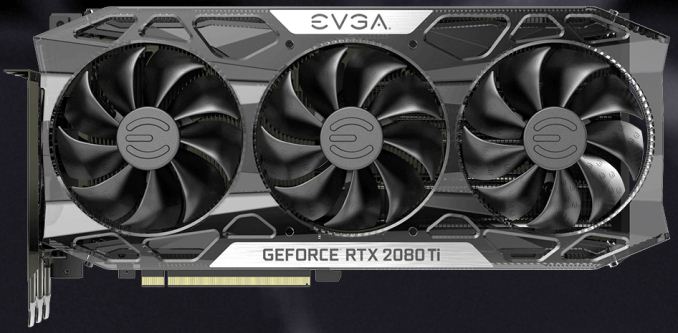

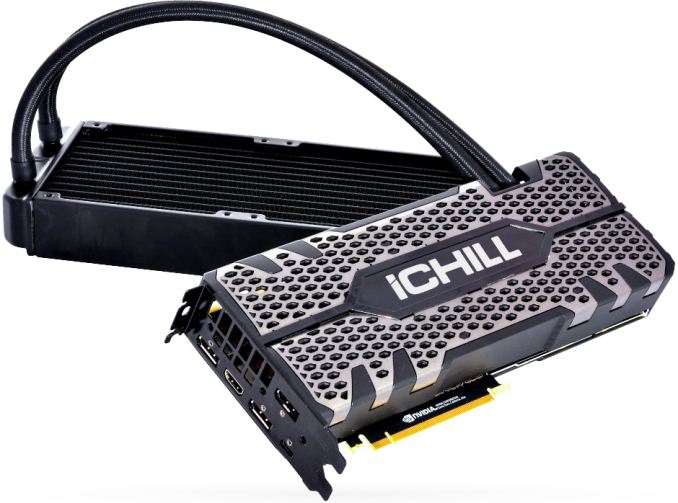
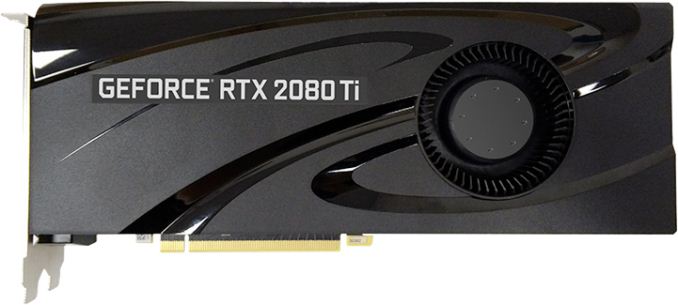

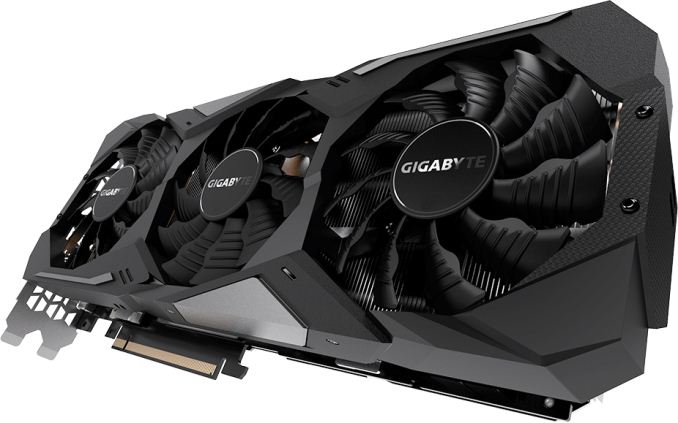
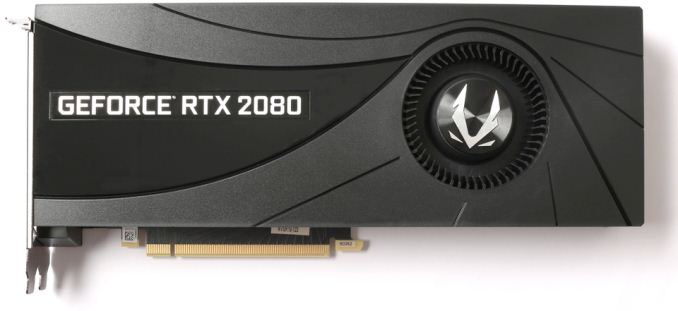








47 Comments
View All Comments
Santoval - Friday, August 24, 2018 - link
Since Nvidia released the 2080Ti along with 2080 and 2070 the next-gen (30xx series or whatever) should be released (at 7nm) in one year tops. Due to the high cost and high TDP of the very big 2080Ti die they might even release a refresh of it, possibly branded as Titan (Xp?), at 7nm ~6 months after the 2080(Ti) release.It would have the same number of shader, tensor and RT cores, 12 GB of DDR6 RAM, and a 384 bit memory bus. It would be quite smaller and much more power efficient, and could thus clock higher, having up to around 1.8 GHz base clock and at least a 2 GHz boost clock. Along with a .. "bargain price" of US$ 1,499.
PeachNCream - Friday, August 24, 2018 - link
That's a lot of speculation about specifications. What's your information source for the new 7nm card, its timeline, and specs?Alistair - Friday, August 24, 2018 - link
Probably new cards at 7nm next year. I don't think these will be 2 year cards. HDMI 2.1 in 2020 seems a bit late...Nagorak - Sunday, August 26, 2018 - link
When is the last time we had a one year cycle?cfenton - Friday, August 24, 2018 - link
You have a TV that has an input that will accept a 4K signal at over 60hz? Or do you mean this may be a problem for a future TV?Nagorak - Sunday, August 26, 2018 - link
Can't you use a DP to HDMI adapter?imaheadcase - Thursday, August 23, 2018 - link
So when do the reviews on card drop, day of release or before?Sttm - Thursday, August 23, 2018 - link
I believe I read embargo date on reviews is Sept. 14th.WorldWithoutMadness - Thursday, August 23, 2018 - link
Meh, just wait until next year, it might get massive price cut if rx600 series can fight the performance.darckhart - Thursday, August 23, 2018 - link
in the last photo, doesn't that "face" on the fan remind you of the vega design? NOW who's trying to confuse whom nvidia? /s